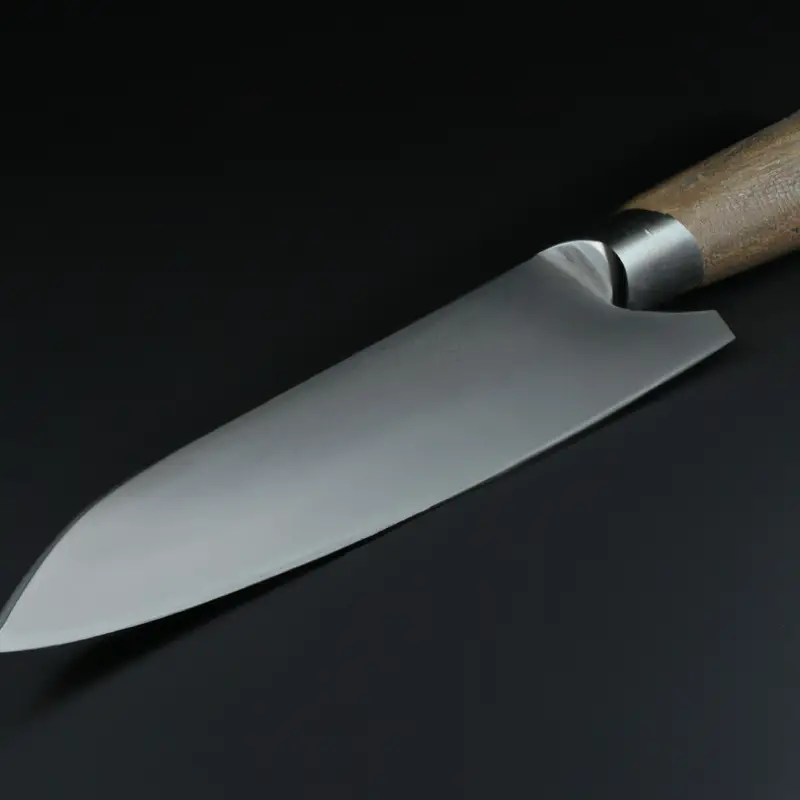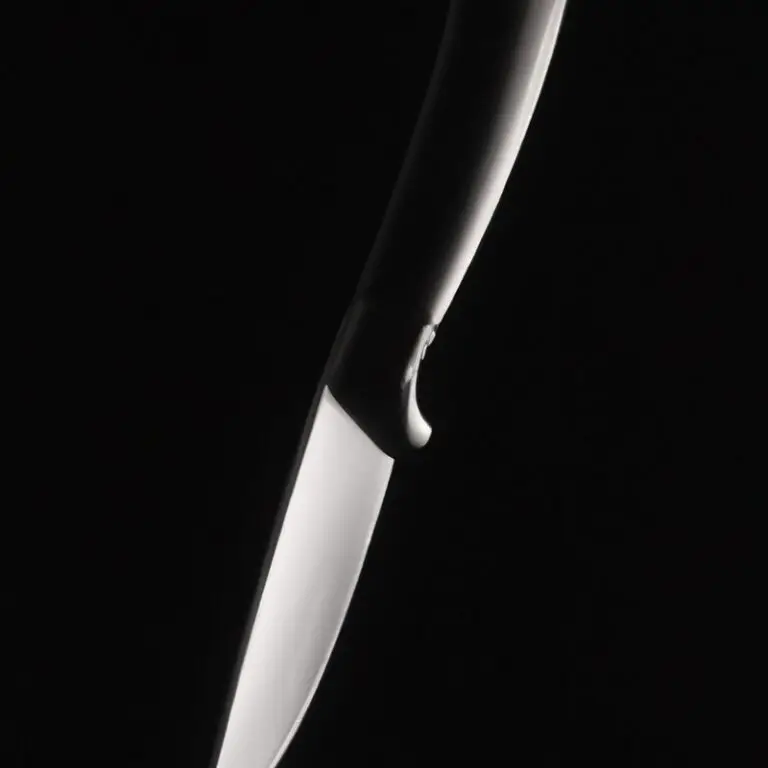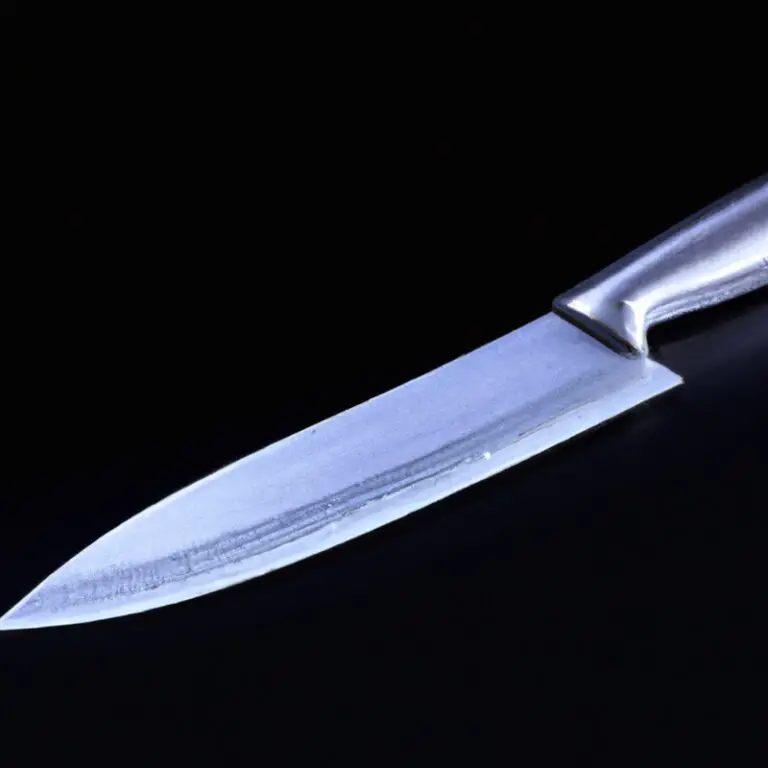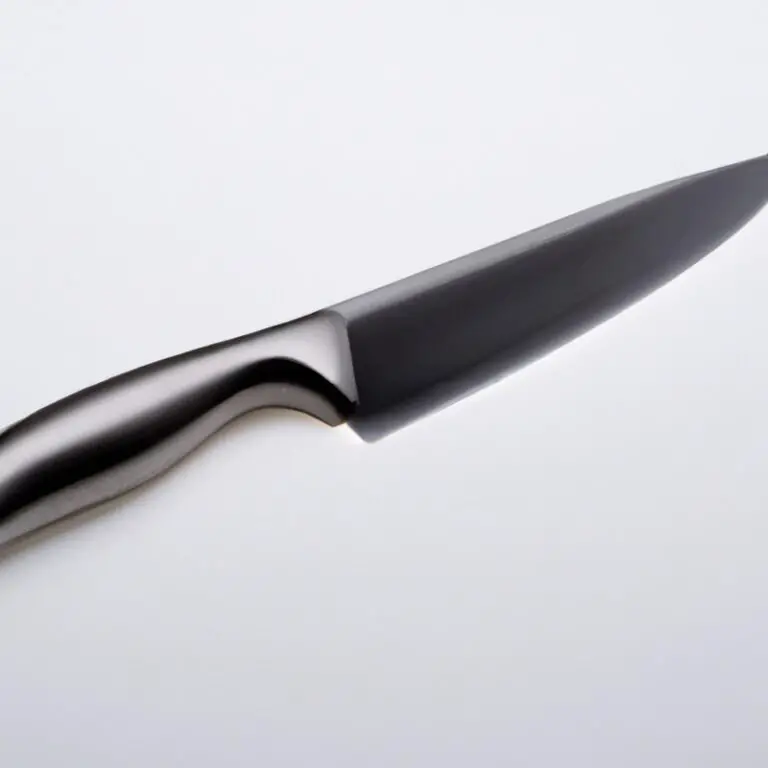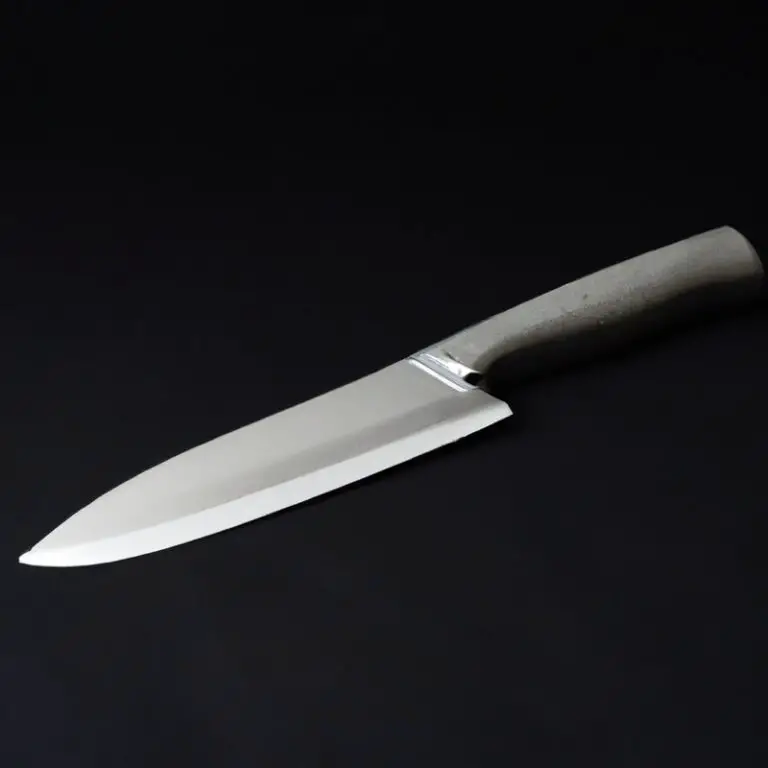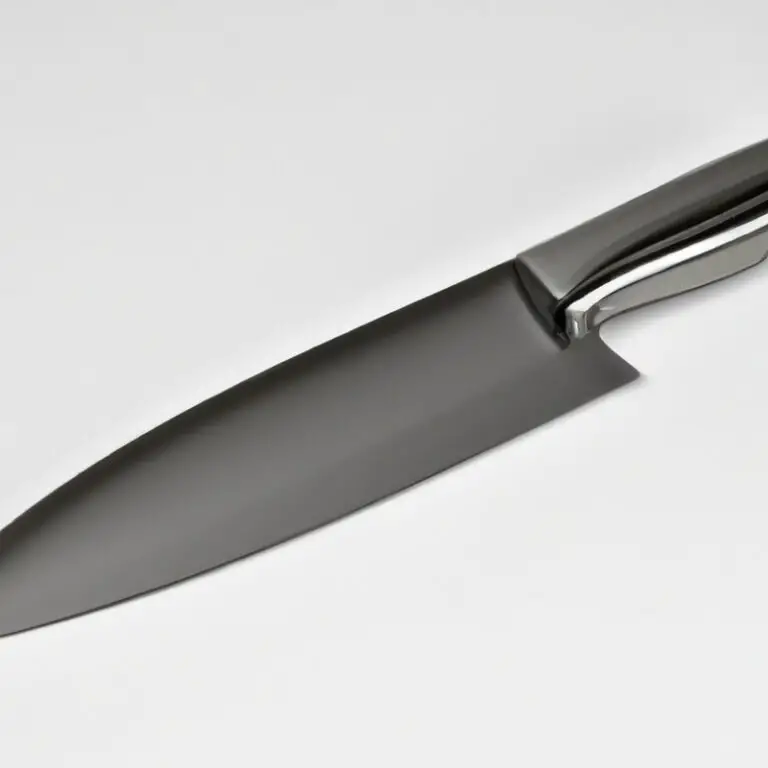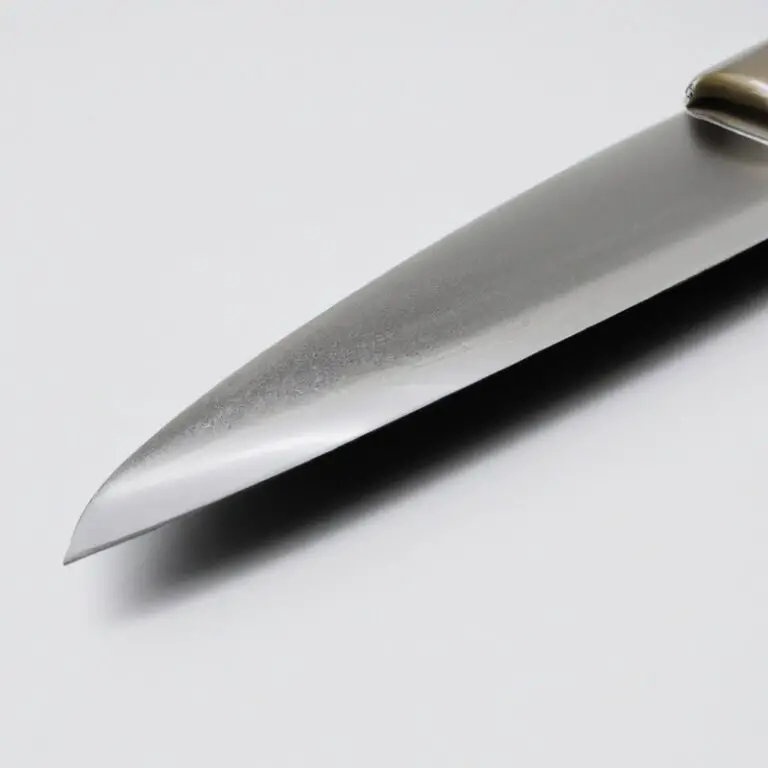Can You Use a Santoku Knife For Peeling? Explained!
Key Takeaways:
- Santoku knives are not ideal for peeling due to their blade design and lack of a pointed tip.
- Peeling with a Santoku knife can be awkward and potentially dangerous, as it was not designed for this purpose.
- It is recommended to use a paring knife or a specialized peeling knife for efficient and safe peeling.
- Choosing the right tool for the job can make a significant difference in the quality and efficiency of your food preparation.
Have you ever wondered if a Santoku knife could be used for peeling? This versatile kitchen tool has gained a lot of popularity for its all-purpose abilities, but can it replace a trusty paring knife for peeling tasks?
In this article, we will explore the differences between Santoku and paring knives, the pros and cons of using a Santoku knife for peeling, and tips on choosing the right one for your needs.
Plus, learn some creative uses for your Santoku knife beyond just peeling. Get ready to step up your peeling game with your Santoku knife!
| Santoku Knife for Peeling |
|---|
| Pros |
| Cuts thin slices with precision |
| Versatile for chopping, dicing and mincing |
| Lightweight and easy to handle |
| Cons |
| Curved blade makes it difficult to peel round fruits and vegetables |
| Serrated edge can damage delicate produce like tomatoes |
| Not designed for tasks that require a lot of precision, like carving |
Santoku Knife Overview: Learn About This Versatile Kitchen Tool
A Santoku knife is a versatile kitchen tool that originated in Japan. Its name translates to ‘three virtues’, referring to its ability to chop, slice and dice.
Santoku knives typically have a shorter blade length compared to a traditional chef’s knife, but with a wider blade profile.
This allows them to perform a variety of tasks, including slicing through meat, fish, and vegetables with ease. The blade of a Santoku knife is typically made of high-quality stainless steel or carbon steel, which makes it resistant to corrosion and easy to maintain.
The blade is also usually sharpened on both sides, allowing for efficient cutting action whether you’re a righty or lefty.
Santoku knives come in a variety of sizes, with the most common blade length being around 7 inches. However, they can range from 5 to 8 inches, depending on your needs and preferences.
The shape of the blade is often what sets Santoku knives apart from other knives.
The long, straight blade profile with a slightly curved tip allows for precision cutting while minimizing wrist strain. Overall, the Santoku knife is a versatile kitchen tool that can handle a variety of tasks with ease.
Its unique shape and blade profile make it a favorite among professional chefs and home cooks alike.
Whether you’re looking to slice through meats, chop vegetables, or dice herbs, a Santoku knife is a great choice for any kitchen.
Differences Between a Santoku Knife and a Paring Knife: Which is Better for Peeling?
While both Santoku knives and paring knives are used for peeling, they have significant differences in design and functionality. Santoku knives typically have a wider blade with a scalloped edge, which may make it challenging to achieve precision cuts on small items such as shallots or garlic.
On the other hand, paring knives have a smaller blade with a sharp point, which allows for more precise control and flexibility when peeling small fruits and vegetables.
Ultimately, the choice between a Santoku knife and a paring knife for peeling comes down to personal preference and the specific task at hand.
Pros and Cons of Using a Santoku Knife for Peeling
Pros:
- The flat blade of a Santoku knife allows for precise cuts and peels, especially when compared to a chef’s knife with a curved blade.
- The wider blade of a Santoku knife can be useful for peeling larger fruits and vegetables, such as pumpkins or watermelons.
- The versatility of a Santoku knife means that it can be used for multiple tasks in the kitchen, reducing the need for multiple knives.
Cons:
- The length of a Santoku knife may make it difficult to maneuver in tight spaces when compared to a paring knife.
- The wider blade may make it more challenging to peel small or narrow items, such as garlic cloves or shallots.
- If the Santoku knife is not properly sharpened, it may require more effort when peeling and increase the risk of accidents.
How to Choose the Right Santoku Knife for Your Peeling Needs
When choosing a Santoku knife for peeling, consider blade length, blade thickness, and edge sharpness. A shorter blade length between 5-7 inches is recommended for better maneuverability and control while peeling.
A thinner blade thickness allows for easy control and precision.
Look for a knife with a sharp edge that can easily cut through tough skins without tearing or damaging the flesh. Additionally, consider the handle material and ensure it has a comfortable grip.
Choose a Santoku knife made from high-quality stainless steel for durability and easy maintenance.
It is also necessary to take care of the knife and sharpen it regularly to maintain its edge.
Peeling Precision: Techniques for Using a Santoku Knife
To achieve peeling precision with a Santoku knife, there are a few techniques to keep in mind. First, use the tip of the blade to start the peeling process and create a notch.
Then, use the flat part of the blade to glide along the fruit or vegetable and remove the skin.
It’s important to maintain a constant pressure and angle to prevent cutting too deeply or unevenly. Additionally, using a grip that feels comfortable and secure will help with accuracy.
With practice and these techniques, a Santoku knife can be a great tool for precise peeling in the kitchen.
Safety First: Tips for Using a Sharp Santoku Knife to Peel Safely
Using a sharp Santoku knife can make peeling fruits and vegetables faster and more efficient, but it is essential to prioritize safety to prevent accidents. Here are some tips for using a sharp Santoku knife to peel safely:
- Always use a cutting board to prevent the knife from slipping and to protect your hand.
- Keep your fingers curled under the item being peeled to avoid accidentally cutting yourself.
- Use a gentle sawing motion and avoid applying too much pressure to the knife.
- Keep the knife pointed downwards and away from your body while peeling.
- Make sure your knife is sharp to prevent slipping or needing to apply extra force.
- Store your Santoku knife in a safe and secure place, preferably in a knife block or a sheath.
By following these tips, you can ensure a safe and efficient peeling experience when using a sharp Santoku knife.
Sharpening Your Santoku Knife for Optimal Peeling Performance
To achieve optimal peeling performance with your Santoku knife, it is imperative to keep it sharpened. A dull knife can make peeling difficult and unsafe.
To sharpen your Santoku knife, you can use a sharpening stone, honing rod, or an electric sharpener.
Sharpening stones are typically the most efficient tool for keeping your Santoku knife sharp, but they require some practice and skill to use effectively. Honing rods can be used to touch up the blade edge between sharpening sessions, while electric sharpeners are a quicker alternative to sharpening stones.
It is important to follow the manufacturer’s instructions when using an electric sharpener to avoid damaging your Santoku knife.
Keep in mind that a sharp knife is always safer and more effective than a dull one.
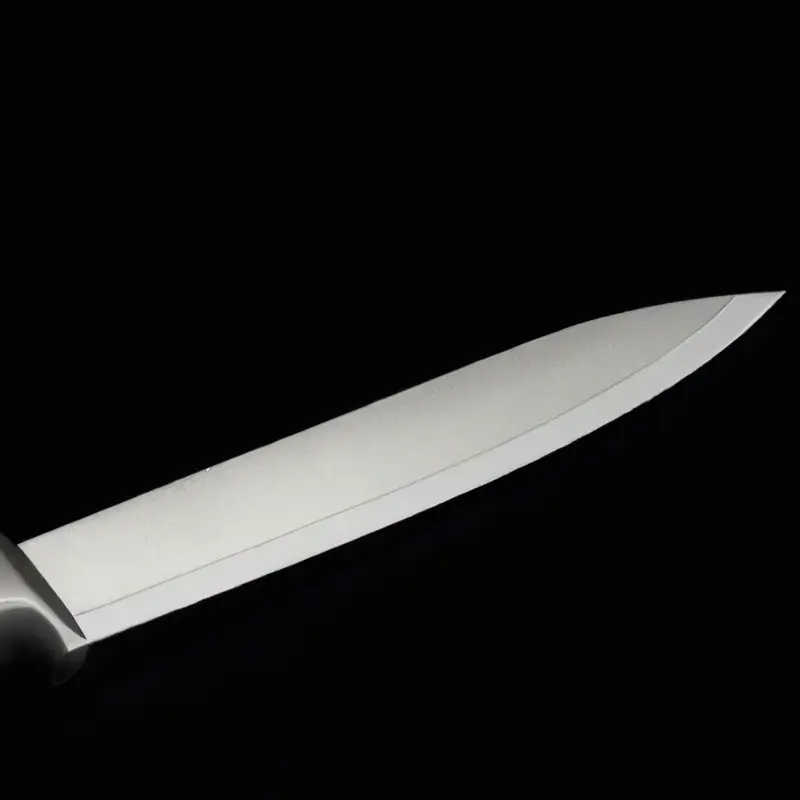
Maintenance and Care: Keeping Your Santoku Knife in Top Shape for Peeling
To keep your Santoku knife in optimal peeling condition, proper maintenance and care are necessary. Here are some tips to follow:
- Clean the knife after each use: Use a damp cloth to wipe the knife clean. Avoid using abrasive cleaners or scrubbers that could damage the blade.
- Store the knife properly: Keep your Santuku knife in a knife block or on a magnetic strip to prevent damage to the blade edge.
- Sharpen the blade regularly: Use a sharpening stone or honing rod to keep the blade edge sharp. A dull blade can make peeling difficult and dangerous.
- Avoid cutting hard objects: Do not use the Santoku knife to cut through bones or frozen food as this can chip or damage the blade.
By following these simple maintenance and care tips, your Santoku knife will stay in excellent condition for all your peeling needs.
Creative Uses for a Santoku Knife Beyond Just Peeling
A Santoku knife is a versatile kitchen tool that can be used for more than just peeling. Here are some creative uses for your Santoku knife:
- Slicing: The Santoku knife’s sharp and thin blade makes it ideal for slicing meats, vegetables, and fruits with precision and ease.
- Chopping: The Santoku knife’s unique shape allows for a rocking motion that makes chopping herbs, nuts, and vegetables effortless.
- Dicing: The Santoku knife’s sharp blade is perfect for dicing onions, garlic, and other small ingredients.
- Crushing: The flat side of the Santoku knife can be used to crush garlic, ginger, or even nuts.
- Carving: The Santoku knife’s sharp and thin blade makes it perfect for carving roasts, poultry, and ham.
- Shredding: The Santoku knife can be used to shred cabbage, lettuce, and other vegetables into thin strips.
- Smashing: Use the Santoku knife to smash avocados or potatoes for mashed dishes.
A Santoku knife is a versatile tool that can be used for numerous tasks in the kitchen beyond just peeling.
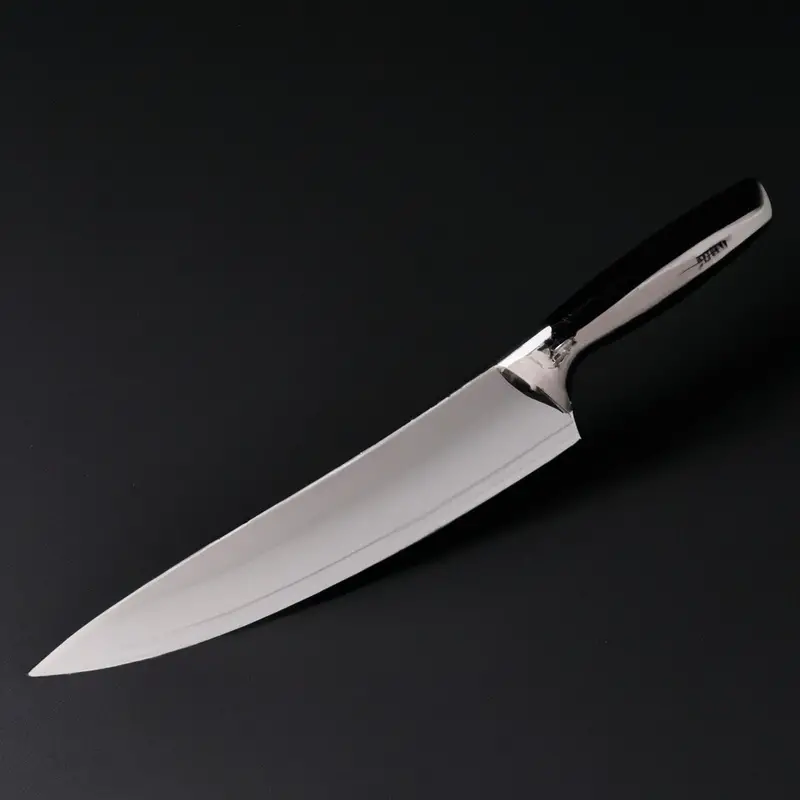
Santoku vs Other Knives: Comparing Peeling Capabilities with Different Knife Styles
When it comes to peeling, paring knives are typically the preferred choice due to their small size and pointed tip. However, a Santoku knife can also be used for peeling fruits and vegetables with practice.
The wide blade of a Santoku knife allows for more surface area to make smooth and even cuts.
It also has a straight edge, which can be helpful for slicing off the skin evenly. However, it is important to note that a Santoku knife may not be as precise as a paring knife for more delicate peeling tasks.
Ultimately, the choice of knife comes down to personal preference and how comfortable you are using it for peeling.
Final Verdict
A Santoku knife can be a versatile choice for peeling, especially for those who prefer a larger blade and a comfortable grip. However, it’s essential to be aware of the pros and cons and use the right techniques to ensure safety and precision.
When choosing a Santoku knife for peeling, look for a sharp and well-balanced blade that suits your hand size and style.
Remember to maintain and sharpen your knife regularly to keep it in optimal performance. With these tips and insights, you can make the most of your Santoku knife for peeling and explore its creative uses beyond the traditional kitchen tasks.
Trust in the reliability of the information presented, wield your Santoku knife with confidence, and let your culinary skills shine.

